
2023
-
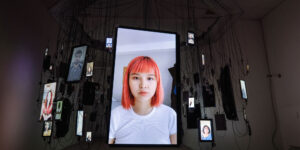
The More The Better (Two Truths and a Lie)
Mihály Kornai (HU)
The More The Better (Two Truths and a Lie) is a multimedia installation exploring the relationship between foreign languages and trustworthiness. The work consists of 100 videos in the 100 most prevalent languages on the internet, looping on used devices and hanging from a single metal structure.
-
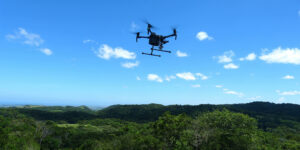
The Living Dead: On the Trail of Female (2022)
Laura Cinti (IT)
No longer existing in the wild, ‘Encephalartos woodii’ is one of the rarest and most endangered plants on Earth. One male specimen was found in 1895 in the Ngoye Forest, South Africa. It was removed from the wild and its offsets have been propagated in botanical gardens worldwide. However, these specimens are all clones of…
-

The Glacier Trilogy
Theresa Schubert (DE)
The Glacier Trilogy is an immersive artwork investigating glaciers as the starting point of fluvial systems and the future of water in climate crisis. A product of advanced computational technologies (such as generative adversarial networks, atmospheric sensors or realtime ice-fluid simulation for 8K) combined with sculpture materials and human creativity, The Glacier Trilogy stimulates an…
-

The (m)Otherhood of Meep (the bat translator)
Alinta (Alinta Krauth) (AU)
The (m)Otherhood of Meep (the bat translator) is an AI interpreter for grey-headed flying foxes, drawing from scientific research on flying fox vocalizations to interpret their voices into poetic form in real-time. It aims to evoke an interspecies bridge between species at the center of human/wildlife conflicts.
-
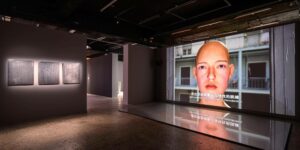
Not allowed for algorithmic audiences
Kyriaki Goni (GR)
A big number of audiences online nowadays is mainly algorithms. Algorithms are trained on the auditory information that is produced and uploaded by humans. In Not allowed for algorithmic audiences, a digital assistant situated in an Athenian apartment exhibits an odd behavior.
-
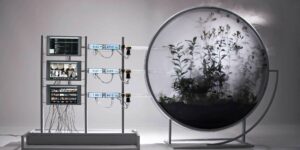
MBc02 – Uncovering the hidden impact of the internet
Thijs Biersteker (NL)
Dutch artist Thijs Biersteker has developed a machine that shows the emissions associated with everyday online activities from video chats and emails to trading NFTs as visible puffs of CO2.
-
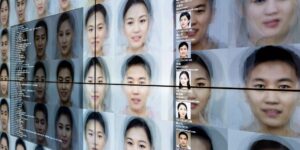
It Could Be You
HsienYu Cheng (TW)
It Could Be You is a thought-provoking art project that explores privacy and identity in contemporary technology. Using machine learning and pentesting or ethical hacking, the project generates fictional personal data through synthetic data frameworks and, by gathering messages from various online forums and chatrooms, it raises questions about privacy and protection.
-
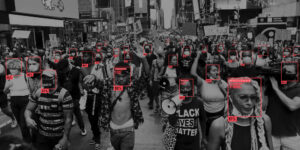
Inside the NYPD’s Surveillance Machine
Amnesty International (INT), Superposition (NL)
Inside the NYPD’s Surveillance Machine is an interactive data visualization revealing the shocking reach of facial recognition technology in New York. The experience allows users to plot a walking route through New York City and discover how much of this route might be exposed to surveillance through facial recognition.
-
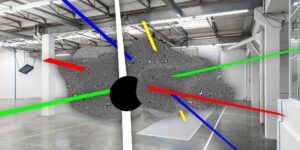
Im/Possible Images
Rosa Menkman (NL)
Imagine you could obtain an ‘impossible’ image of any object or phenomenon that you think is important, with no limits on spatial, temporal, energy, signal/noise, or cost resolutions. What image would you create? (the answer can be a hypothetical image of course!)
-
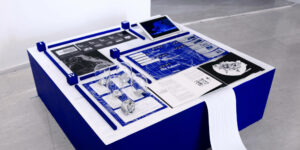
Hyper-Dust
Erlu Ni (CN), Songnan Guo (CN), Shuyi Fan (CN), Ziyao Lin (CN)
Zooming into our micro-level surroundings, dust is the most common but a rather invisible component. However, it carries a wealth of information from global ecology through atmospheric activity. Through working with atmospheric scientists and based on eco-philosophical research and scientific modeling, we started an art project named Hyper-Dust and decided to search for the Sahara…
-
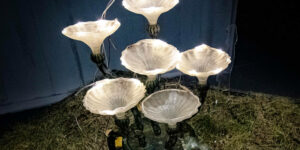
Geo-Llum
Samira Benini Allaouat (IT)
Geo-Llum aims to reimagine the role of public lighting in green urban areas with a symbiotic relationship between the artificial and the natural world, focusing on a deeper understanding of microorganism community such as fundamental collaborators in the city ecosystem.
-

Future Materials
Future Materials is a multidisciplinary knowledge platform that promotes and disseminates knowledge about sustainable materials. Its core aim is to support the transition towards ecologically-conscious art and design practices.

